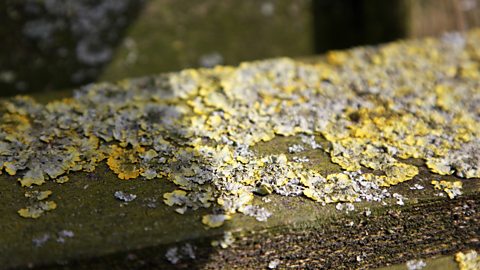Environmental factors
Biotic and abiotic factors can be used to monitor changes in the environment.
Biotic factors
Biotic factors are living factors.
lichenA type of fungus that grows on exposed surfaces. are used to monitor pollution.
They are very sensitive to air pollution.
Little or no lichen will be found in areas with high levels of air pollution.

Abiotic factors
Abiotic factors are non-living factors.
It is important to measure the following factors to monitor changes in the environment.
Carbon dioxide levels
Atmospheric carbon dioxide levels are monitored as high levels are contributing to climate change.
pH
pH levels are measured using a pH probe.
It affects the survival and therefore distribution of plants.
Most plants prefer neutral conditions but some will only grow in acidic or alkaline conditions.
Temperature
Temperature is measured with a thermometer. It affects the rate of cell reactions like photosynthesis.
Water levels
Water/soil moisture levels are measured by finding the mass of a soil sample, drying it and re-weighing it.
It affects the survival and distribution of plants and animals.
Decreasing ice fields
Ice fields are monitored to give an indication of how quickly sea levels are rising.

Image caption, Decreasing ice fields
Ice fields are monitored to give an indication of how quickly sea levels are rising.
Image caption, Water/soil moisture levels
Water/soil moisture levels are measured by finding the mass of a soil sample, drying the sample in an oven and reweighing. The difference in mass gives an indication of the percentage soil moisture. It affects the survival and therefore distribution of plants and animals.
Image caption, pH levels
pH levels are measured using a pH probe. It affects the survival and therefore distribution of plants. Most plants prefer neutral conditions but some will only grow in acidic or alkaline conditions.
Image caption, Carbon dioxide levels
Atmospheric carbon dioxide levels are monitored as high levels are contributing to climate change.
Image caption, Temperature
Temperature is measured with a thermometer. It affects the rate of cell reactions like photosynthesis and diffusion.
1 of 5